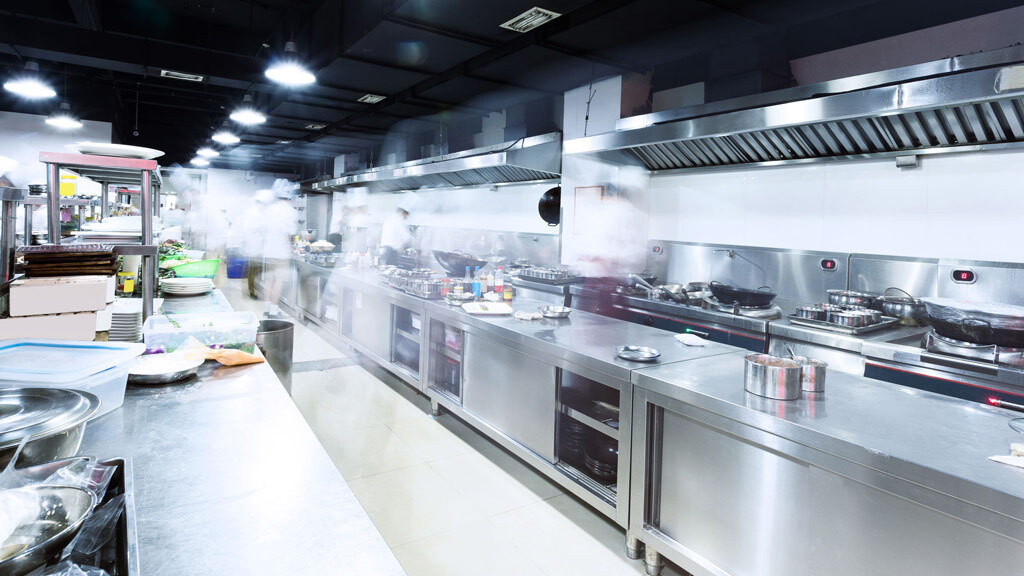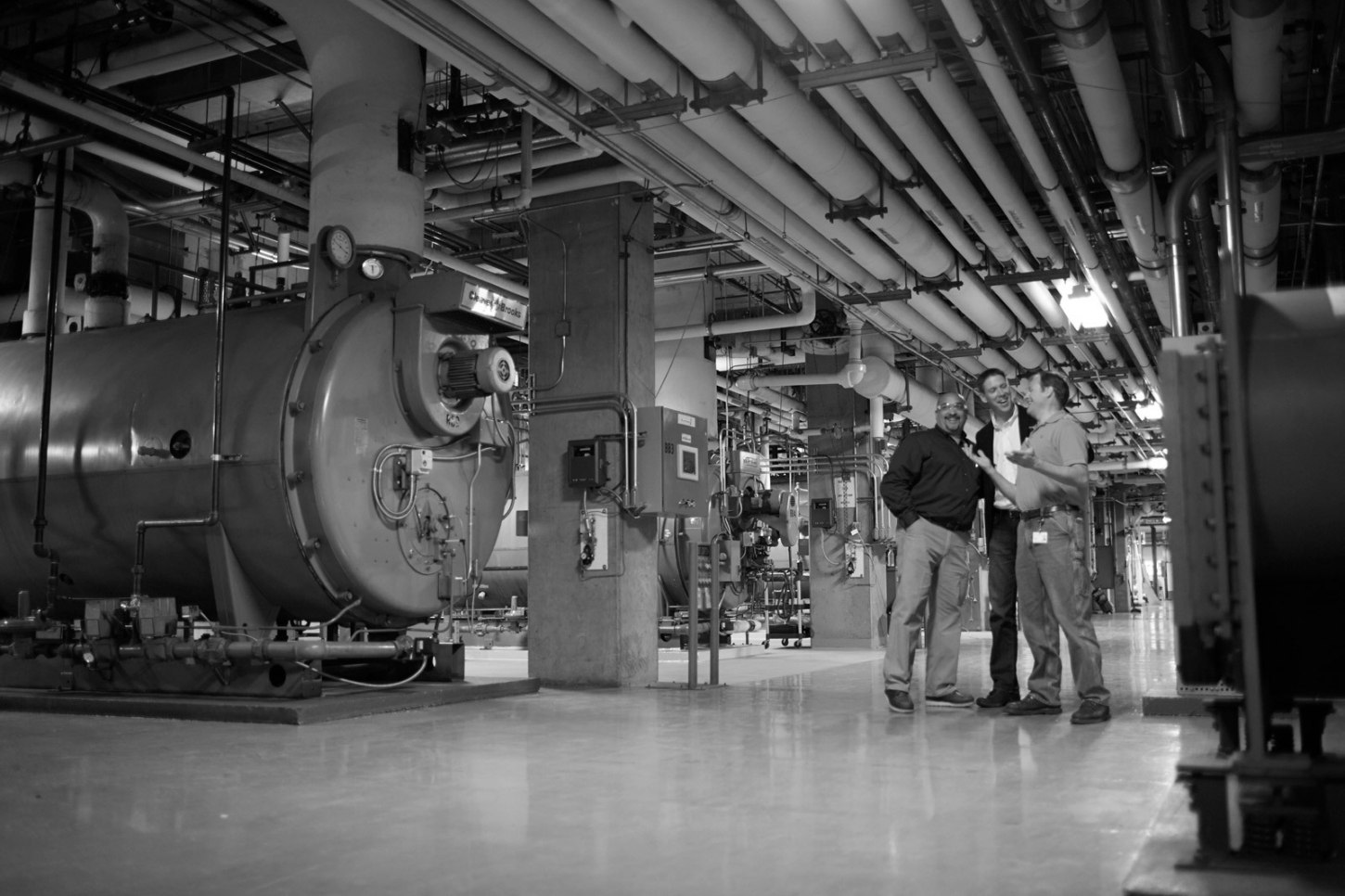
This article was originally published in Western Washington Sheet Metal Journal.
Many code jurisdictions are currently (and inevitably) working on adoption of the 2018 family of International Building Codes, including the International Mechanical Code (IMC). This article will focus on a significant group of code changes and additions regarding commercial kitchen ventilation systems, including for the first-time code language relating to requirements for “pollution control units” installed in Type 1 grease exhaust systems. The SMACNA Western Washington Code and Technical Committee has done a recent review and scrub of this new code language and would like to share our findings with our fellow SMACNAWW members. We should also note that the code sections referenced below are from the 2018 IMC code, which the committee uses in its review and presentation of findings below.
Section 202, Commercial Cooking Appliances Definition (Revised): The technical committee reviewed the revised definition of “Commercial Cooking Appliances”. Previous code language attempted to define commercial kitchen code requirements based on the cooking appliances in the space. The list was incomplete and subject to a wide range of interpretation. This definition needs to be clear as it effects the requirements for kitchen hoods (Chapter 5), including when these are required, and if required, which type needs to be installed. The new definition of a commercial cooking appliances is “Appliances used in a commercial food service establishment for heating or cooking food. For the purpose of this definition, a commercial food service establishment is where food is prepared for sale or is prepared on a scale that is by volume and frequency not representative of domestic household cooking.” The committee agrees with this revised definition, as it more clearly defines commercial kitchens and their associated code requirements as kitchens that either make food for sale or make quantities of food that do not compare with domestic cooking quantities. This definition also provides clarity for small kitchens located in commercial buildings (e.g. office building break rooms with kitchen appliances) that now fall under residential/domestic kitchen code requirements.
Section 202, Pollution Control Unit (PCU) Definition (New): The technical committee reviewed the new code language describing this type of equipment, which is becoming more common in use but to date has not been addressed by the IMC. The new definition a PCU is described as “Manufactured equipment that is installed in a grease exhaust duct system for the purpose of extracting smoke, grease particles and odors from the exhaust flow be means of a series of filters”.
Section 506.3.13, Type 1 Exhaust Hood Termination: The group reviewed this code “clarification” and decided that there is no significant change to previous code requirements. The additional documentation provided in the 2018 IMC provides additional details, including a diagram to clarify minimum distance requirements from a Type 1 exhaust hood wall outlet to fixed windows, operable windows, doors, and outside air intakes. In past code descriptions it was not completely clear on minimum distance requirements from Type 1 exhaust hood outlets to operable windows and outside air louvers (could be interpreted as 3 feet, code intent is 10 feet). The committee agreed that there has been uncertainty in the past on minimum clearances and this code clarification better defines these minimum code distances for each type of exterior wall opening.

Section 506.5.2, Pollution Control Units: This is a new code section, which describes the requirements for the installation of Type 1 grease hood pollution control units, which are built to extract the majority of grease and odors from type 1 hood/duct systems. As this is a relatively new technology, no specific code requirements have been in place to address the specifics of this type of installation. The new code language relies heavily on compliance with “manufacturer’s installation instructions”, but also addresses details on how to hook this equipment into Type 1 grease duct systems (e.g. requirements for flexible connectors). The specific code language describing the installation and operation of PCU’s is as follows:
1. Pollution-control units shall be listed and labeled in accordance with UL 1978.
2. Fans serving pollution-control units shall be listed and labeled in accordance with UL 762.
3. Pollution-control units shall be mounted and secured in accordance with the manufacturer’s installation instructions and the International Building Code.
4. Pollution-control units located indoors shall be listed and labeled for such use. Where enclosed duct systems, as required by Section 506.3.11, are connected to a pollution control unit, such unit shall be located in a room or space having the same fire-resistance rating as the duct enclosure. Access shall be provided for servicing and cleaning of the unit. The space or enclosure shall be ventilated in accordance with the manufacturer’s installation instructions.
5. A clearance of not less than 18 inches (457 mm) shall be maintained between the pollution-control unit and combustible material.
6. Roof-mounted pollution-control units shall be listed for outdoor installation and shall be mounted not less than 18 inches (457 mm) above the roof.
7. Exhaust outlets for pollution-control units shall be in accordance with Section 506.3.13.
8. An airflow differential pressure control shall be provided to monitor the pressure-drop across the filter sections of a pollution-control unit. When the airflow is reduced below the design velocity, the airflow differential pressure control shall activate a visual alarm located in the area where cooking operations occur.
9. Pollution-control units shall be provided with a factory- installed fire suppression system.
10. Service space shall be provided in accordance with the manufacturer’s instructions for the pollution-control unit and the requirements of Section 306.
11. Wash-down drains shall discharge through a grease interceptor and shall be sized for the flow. Drains shall be sealed with a trap or other approved means to prevent air bypass. Where a trap is utilized it shall have a seal depth that accounts for the system pressurization and evaporation between cleanings.
12. Protection from freezing shall be provided for the water supply and fire suppression systems where such systems are subject to freezing.
13. Duct connections to pollution-control units shall be in accordance with Section 506.3.2.3. Where water splash or carryover can occur in the transition duct as a result of a washing operation, the transi-tion duct shall slope downward toward the cabinet drain pan for a length not less than 18 inches (457 mm). Ducts shall transition to the full size of the unit’s inlet and outlet openings.
14. Extra-heavy-duty appliance exhaust systems shall not be connected to pollution-control units except where such units are specifically designed and listed for use with solid fuels.
15. Pollution-control units shall be maintained in accordance with the manufacturer’s instructions.
The committee agreed with the new language describing this equipment and the installation requirements for same. We could not identify any missing or unclear language in the 2018 code language and look forward to having code language regarding this type of installation for engineers, contractors and code inspectors to reference on future projects.
Questions or Comments?
For media inquiries or related questions, please contact info@umci.com
